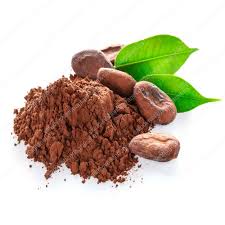
History of Cocoa Powder
Cocoa powder is a popular ingredient in many desserts and beverages, known for its rich chocolate flavor and health benefits. The history of cocoa powder is deeply rooted in ancient Mesoamerican civilizations and has evolved over centuries into the product we know today.
The origin of cocoa powder can be traced back to the Maya and Aztec civilizations of Central America, where cocoa beans were highly valued for their flavor and medicinal properties. Cocoa beans were first cultivated around 1900 BC in the tropical rainforests of Central and South America. The Maya people used cocoa beans as currency, a testament to their worth during this time.
The Maya were known to prepare a bitter beverage called “xocoatl” by grinding roasted cocoa beans and mixing them with water, chili peppers, cornmeal, and various spices. This beverage was believed to have medicinal properties, including boosting energy and enhancing sexual desire.
When the Aztecs rose to power around the 14th century, they too valued cocoa beans, incorporating them into their religious rituals and social customs. They called the drink “xocoatl,” which later became “chocolatl.” The Aztecs believed that the cocoa god, Quetzalcoatl, brought cocoa beans to Earth from heaven. Similar to the Maya, the Aztecs consumed xocoatl as a frothy, bitter beverage made from ground cocoa beans, water, chili peppers, annatto, and vanilla.
The arrival of Europeans in the Americas marked a turning point in the history of cocoa powder. Spanish conquistadors led by Hernán Cortés encountered xocoatl during their conquest of the Aztec Empire in the early 16th century. Cortés was introduced to this beverage by Moctezuma II, who believed it had invigorating properties. Cortés brought cocoa beans back to Spain, where they quickly gained popularity among the upper class. To cater to European tastes, Spanish producers began adding sugar and cinnamon to the drink, creating a sweeter version of xocoatl that eventually became known as hot chocolate.
In the 18th century, Coenraad Johannes van Houten, a Dutch chemist, developed a hydraulic press that could extract cocoa butter from ground cocoa beans, leaving behind a powdery residue called “cocoa presscake.” This innovation made it possible to produce cocoa powder on a larger scale and at a more affordable price. Van Houten also invented the “Dutching” process, which involved treating cocoa powder with alkaline salts to reduce its bitterness and improve its solubility in water. This new form of cocoa powder became widely available in Europe during the mid-19th century.
In 1875, Daniel Peter and Henri Nestlé developed milk chocolate by adding condensed milk to chocolate made from cocoa powder and sugar. This innovation led to an even greater demand for cocoa powder worldwide. Today, cocoa powder is used in various applications such as baking, confectionery, ice cream production, and beverages like hot chocolate and chocolate milkshakes. It remains an essential ingredient in both professional kitchens and home cooking due to its rich taste and versatile uses.
Vitamins and Minerals from Cocoa Powder
Cocoa powder is known to be a rich source of various nutrients, including vitamins and minerals. Below are the main vitamins and minerals present in cocoa powder:
Vitamins:
- Vitamin B1 (Thiamin): Thiamine is important for carbohydrate metabolism and nerve function.
- Vitamin B2 (Riboflavin): Riboflavin is essential for energy metabolism and skin health.
- Vitamin B3 (Niacin): Niacin plays a crucial role in energy production at the cellular level.
- Vitamin B5 (Pantothenic Acid): Pantothenic acid is necessary for the synthesis of hormones and fat metabolism.
- Vitamin B9 (Folic Acid): Folic acid is essential for cell division and the formation of DNA.
- Vitamin E: Vitamin E is an antioxidant that protects cells from oxidative damage.
Cocoa powder is a versatile and delicious ingredient that can be used in a wide variety of recipes, from